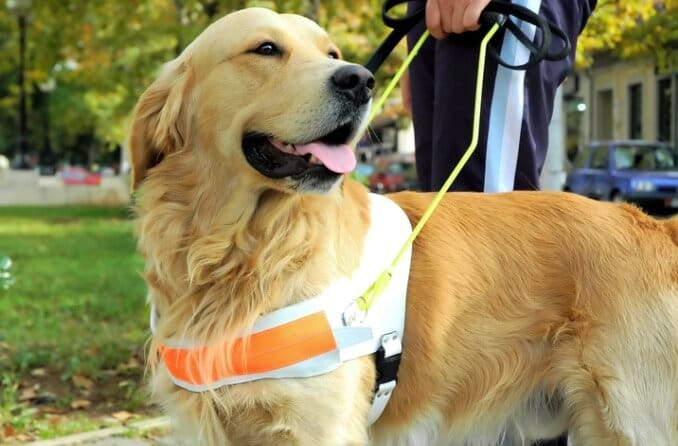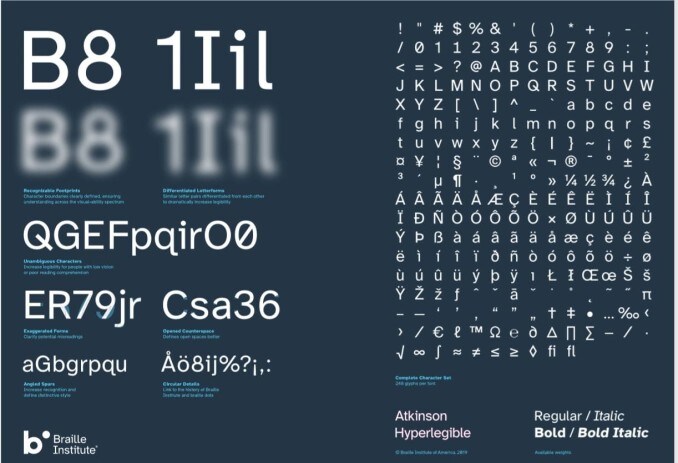What is Anchor Center for Blind Children?
Anchor Center for Blind Children is a nonprofit organization providing services to kids with serious visual or visual/hearing impairments. Based in Denver, Colorado, the center offers early intervention and learning programs to infants and young children.
Those enrolled can attend from birth through age 5.
At Anchor Center, children and their families can find support from a multidisciplinary team of professionals. These include pediatric ophthalmologists and teachers of students with visual impairment. The team also encompasses educators, therapists and those providing family services. They are trained to work with young children who are blind or visually impaired.
The center offers a variety of developmental, educational and support services in a safe, welcoming environment. Some of these include:
Eye exams
Vision assessments
Physical therapy
Occupational therapy
Speech-language therapy
Recreational therapy
Music therapy
Low vision therapy
Educational programs
Family events
Besides being a school for blind children, Anchor Center is also known for its research in cerebral (cortical) visual impairment (CVI). This is a brain-based disorder that causes vision loss. This is caused by damage to the areas of the brain that are responsible for visual processing.
History of Anchor Center
Anchor Center for Blind Children was founded in 1982 to meet the developmental and educational needs of young children with significant visual impairments. A librarian who worked at the Colorado Library for the Blind played a key role in the center’s establishment.
In its first year, Anchor Center served 10 children. It has expanded over the years and now serves over 400 children.
Today, Anchor Center provides resources to help children with impaired vision learn and thrive as they grow. It also offers education and support to each child’s family, including siblings. Their mission includes helping children achieve their highest levels of function and independence at home, in school and in their community.
Educational programs at Anchor Center for Blind Children
Anchor Center offers several hands-on programs tailored for each age group it serves. Infants and toddlers can receive services either at home or at the center. Preschoolers typically attend programs on-site.
A team of experts works cohesively to provide services that best meet a child’s needs. This team includes:
Pediatric eye doctors
Vision teachers
Early childhood special educators
Orientation and mobility instructors
Therapists
Other professionals
Tailored learning for different age groups
Infants, toddlers and preschoolers develop at various rates. Anchor Center designs learning and play at these different levels of development. This helps accommodate and support growing children as they learn to navigate the world with low or impaired vision. Programs have been specifically designed for the following age groups:
Infant program (birth to 18 months)
Infant-age education fosters developmental skills and prepares a child for early learning. This stage is crucial to the child’s development.
The infant program provides help for babies with visual and visual/hearing impairments at this early stage in life. It also helps parents and caregivers understand the child’s diagnosis and needs.
Some of the services provided in the infant program include:
Addressing a child’s individual strengths and vision needs
Providing an encouraging environment for play and learning
Teaching caregivers activities for use outside of the learning center
Recommending ways to adapt a home to best suit the child’s development
Toddler program (18 months to 3 years old)
Toddler-age learning focuses on getting children ready for preschool. It also involves building social skills. These services can include:
Guiding students in social interactions through play and educational activities
Encouraging students to explore and move on their own in a safe environment
Introducing students to braille and pre-reading exercises
Providing a social setting where students can eat, taste and explore new foods
Many of these skills are taught in Anchor Center’s home-based services and activities for babies and toddlers. Instructors teach parents and caregivers how to meet the needs of each child and support their development at home.
Preschool program (3 to 5 years old)
Preschool-age learning helps prepare children for kindergarten and beyond. This involves learning techniques that are especially helpful for children with visual impairments. These involve:
Encouraging self-determination and independence
Teaching through sensory experiences
Practicing mobility and orientation
Enhancing social and functional skills
Students move through the program at their own pace, which is important when learning to navigate their vision diagnosis. Educators at Anchor Center strive to help children gain important skills and independence in each lesson.
SEE RELATED: How to detect eye problems in toddlers
CVI research
Specialized teaching and therapeutic techniques are part of what sets Anchor Center apart. Team members help research childhood visual impairment to better understand and serve the needs of this community. Anchor Center is also known for its research in the diagnosis and treatment of cerebral/cortical vision impairment (CVI).
CVI is a condition that impacts the vision-processing areas of the brain. It disrupts communication between the brain and eyes. Unlike some other forms of visual impairment, which stem from issues with the eyes themselves, CVI originates in the brain. It is the leading cause of visual impairment in young children.
Some children with cortical vision loss are blind and some have partially impaired vision. There is a spectrum of visual abilities within this diagnosis.
Anchor Center is one of the front runners in CVI research. The organization works with researchers all over the globe to learn more about CVI and how to best detect and address the condition.
Currently, there is no cure for CVI. Some children with the disorder may experience improvements in their vision over time. Intervention strategies can help children maximize their existing vision potential.
Intervention methods include the use of:
Glasses
Low vision devices (such as telescopes and magnifiers)
Therapy to maximize activities of daily living
Anchor Center aims to provide information, early detection and support for children and their families affected by CVI.
SEE RELATED: A guide to children's vision problems
Accessibility and support services at Anchor Center
One of the most important missions of Anchor Center is to provide support for families and caregivers.
Family members are encouraged to get involved in the child’s education and development. But sometimes knowing where to begin can be confusing. The team at Anchor Center provides the help and guidance needed.
Anchor Center offers a variety of family support services. Some of these include:
Daycare for siblings (under age 5) while parents learn with the student
Scholarships and financial help
Interpreters for non-English speaking parents and caregivers
A network of treatment between caregivers, hospitals and primary care providers
Opportunities to connect and network with other families
Programs to educate and support siblings and other family members
Transportation for local families may also be available.
Impact of Anchor Center on families and communities
Hundreds of families have found invaluable help for their children at Anchor Center. Whether services begin during infancy or preschool, each child receives the support needed to reach their highest potential. This can have a positive, lifelong impact on the children, their families and their communities.
Visit the Anchor Center for Blind Children website for more information and to learn how to enroll a child. You can also schedule a tour at the center to gain more insight.
READ NEXT: Leber congenital amaurosis: A common cause of childhood blindness











